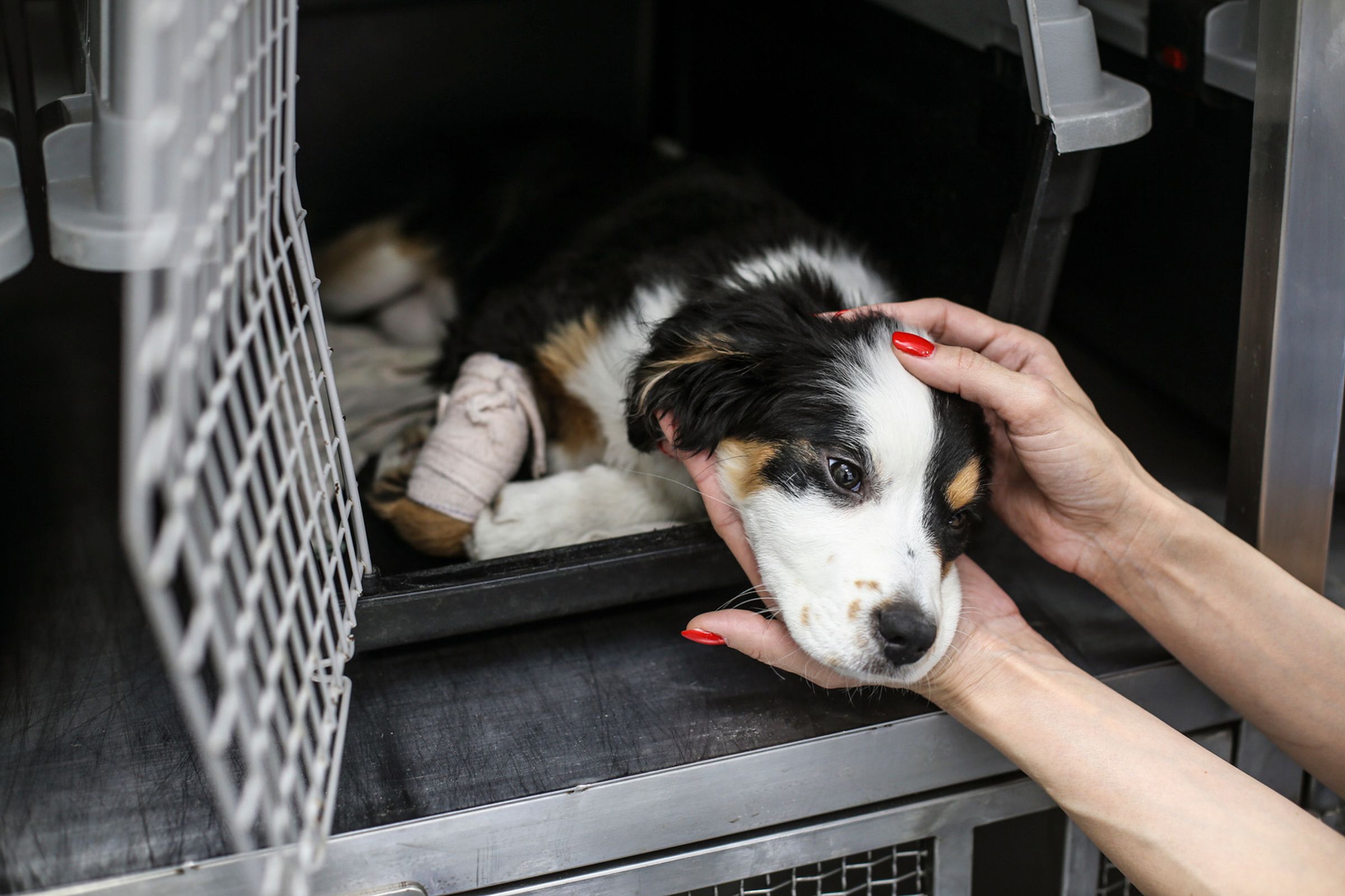Select and customize the fundraising method best suited for your organization
BetterWorld seamlessly integrates with both online and in-person auctions
Impress donors with creative raffle items and elegant online raffles
Create attractive donation pages that maximize donor impact and boost online giving
How to Plan and Launch Your Own Dog Rescue Nonprofit
By Colin Hunter

Have you ever dreamed of making a real difference in the lives of our four-legged friends? Picture this: creating a safe haven for dogs in need, giving them a second chance at a happy, loving home. If you're passionate about pooches and ready to take on an inspiring challenge, then planning and launching your own dog rescue nonprofit might be your perfect mission.
Starting a dog rescue isn't just about the cuddles and wagging tails—though those are definitely perks! Think of it like embarking on a thrilling adventure! We're talking about diving into the nitty-gritty of logistics, rallying an awesome support crew, and, above all, being the voice for those adorable creatures who can't speak for themselves. In this guide, we're your trusty companions, ready to lead you through the steps to transform your passion into reality. From brainstorming wild ideas to rallying funds, assembling your dream team, and cheering on your first furry success story, we're in it together. So, buckle up and get ready for a journey filled with love, dedication, and plenty of joyful barks. Let's make a paw-some impact side by side!
Animal Rescue vs. Animal Shelter
Before we dive into this noble venture, let’s clear up a common point of confusion: What's the difference between an animal rescue and an animal shelter? Understanding this is key to shaping your mission and operations.
Animal rescues, which we'll be focusing on in this post, are often privately owned and operated, sometimes right out of the owners' homes. You set your own fees, hours, and policies, giving you the flexibility to prioritize animal welfare and rehabilitation. Many rescues focus on specific species or breeds and rely on a network of foster families to share the load. Since rescues are privately run, they depend heavily on donations and the community's generosity.
On the other hand, animal shelters are typically government-run and funded, though they still engage in fundraising efforts. They operate under more bureaucracy and regulations, with a primary goal of reducing the stray population for public welfare. Shelters often take in a large number of animals, mostly dogs and cats, without breed discrimination.
Ready to turn your passion for pups into a lifesaving mission? Let’s dive into the steps to plan and launch your own dog rescue nonprofit, and make a real difference in the lives of countless canines!
Ready to Rescue? Find Out if Starting an Animal Rescue is Your Perfect Fit!
Did you know that there are over 13,000 animal shelters and rescue groups in the United States? According to the ASPCA, approximately 6.5 million companion animals enter U.S. shelters every year. Out of these, around 3.3 million are dogs. While about 3.2 million shelter animals are adopted each year, sadly, approximately 1.5 million are euthanized.
Animal rescues are like the unsung heroes of the animal world! They play a crucial role in reducing those staggering numbers by giving foster homes and specialized care to animals who might not do well in a regular shelter setup. It's all about creating a cozy, loving space where every furry friend can flourish, tail wags and all! Unlike shelters, rescues often focus on specific breeds or species and work with a network of foster families. This can be especially beneficial for animals requiring extra medical attention or behavioral training.
But let’s get real. Running an animal rescue means being ready for a lifestyle change. You’ll be juggling multiple responsibilities—fundraising, coordinating with fosters, handling medical emergencies, and much more. It’s not just about loving animals; it’s about having the grit and perseverance to deal with the hard parts too.
Here's a quick checklist to see if starting a rescue might be right for you:
Passion and Commitment: Are you deeply passionate about animals and ready to commit a significant amount of time and energy?
Organizational Skills: Can you handle the administrative side, like paperwork, scheduling, and managing volunteers?
Financial Planning: Are you prepared to fundraise and manage finances effectively? Rescues rely heavily on donations.
Emotional Resilience: Can you cope with the emotional ups and downs, including dealing with sick or injured animals and the occasional heartbreak?
Support Network: Do you have a network of like-minded people to help, including veterinarians, volunteers, and foster families?
If you’re nodding along and feeling even more excited, then starting an animal rescue might just be the perfect fit for you. Ready to make a real difference? Let’s dive into the steps to get your rescue off the ground and start saving those precious lives!
Here's Your Guide to Starting a Dog Rescue Nonprofit
Ready to turn your passion for pups into a full-fledged mission? Starting a dog rescue nonprofit is an incredible way to make a difference, but it takes some careful planning and hard work. Don’t worry, though—I’m here to walk you through it step by step. Let’s dive in!
Step 1: Do Your Homework
Before you jump in, it’s crucial to understand the landscape. Research existing rescues and shelters in your area. What do they offer? Where are there gaps in services? This will help you define your niche and avoid duplicating efforts.
Step 2: Develop a Clear Mission
Your mission statement should reflect your goals and values. Are you focusing on a specific breed, age group, or dogs with special needs? Having a clear mission will guide all your decisions and attract like-minded volunteers and donors.
Step 3: Build a Passionate Team
You can’t do this alone! Surround yourself with a team of dedicated volunteers who share your passion. This includes board members, foster families, and volunteers who can help with daily operations, fundraising, and events.
Step 4: Legal and Financial Setup
• Incorporate Your Nonprofit: Register your organization as a nonprofit in your state. This usually involves filing articles of incorporation.
• Apply for 501(c)(3) Status: This federal tax-exempt status will allow you to receive tax-deductible donations.
• Set Up a Bank Account: Keep your personal and nonprofit finances separate. Open a dedicated bank account for your rescue.
Read more about How to Launch Your 501(c)(3) - Step by Step! (insert link row 254)
Try BetterWorld’s robust suite of charity & nonprofit fundraising tools for FREE!
Step 5: Create Policies and Procedures
Establish guidelines for how your rescue will operate. This includes everything from adoption procedures and fees to volunteer roles and responsibilities. Clear policies will help your organization run smoothly and professionally.
Step 6: Fundraising and Outreach
Fundraising is a crucial part of running a nonprofit. Start by creating a website and social media pages to raise awareness. Organize events, apply for grants, and reach out to local businesses for sponsorships. Remember, every little bit helps!
Ready to kickstart your animal rescue nonprofit? Let BetterWorld be your wingman! Our online fundraising and donation platform offers a seamless experience to engage and activate donors, making fundraising a breeze. With our powerful suite of tools and expert guidance from the BetterWorld team, you'll be set up for success every step of the way. Request a free demo to learn more!
Step 7: Build a Network of Foster Homes
Since you might not have a physical shelter, rely on foster families to care for the dogs until they find their forever homes. Recruit and train fosters, and create a support system for them to ensure they have everything they need.
Step 8: Rescue and Rehabilitate
Now comes the fun part—bringing dogs into your rescue! Work with shelters, owners surrendering pets, and other rescues to identify dogs in need. Focus on rehabilitating them, whether it’s through medical care, training, or simply providing a loving environment.
Step 9: Adoption and Follow-Up
Screen potential adopters carefully to ensure they’re a good fit for the dog. Conduct home visits if possible, and stay in touch after the adoption to provide support and ensure the dog is adjusting well to their new home.
Step 10: Keep Learning and Growing
Running a rescue is a continuous learning process. Stay informed about best practices, animal care, and nonprofit management. Network with other rescues, attend workshops, and always look for ways to improve.
Ready to get started? It’s a lot of work, but seeing those wagging tails and knowing you’ve made a difference makes it all worth it. Good luck, and welcome to the wonderful world of dog rescue!

Join 100,000+ amazing nonprofits, organizations, and fundraisers on BetterWorld

Let our FREE fundraising tools help you raise more funds with less effort








